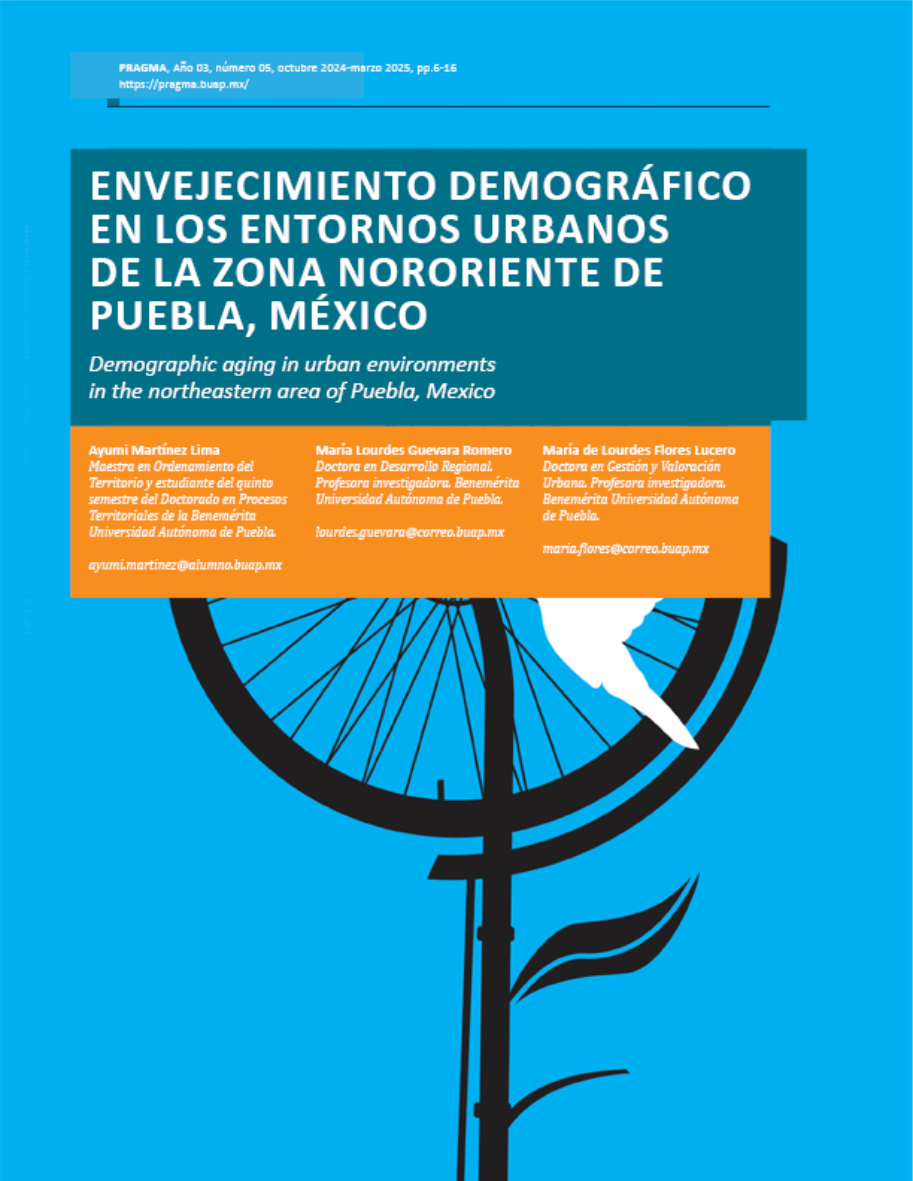Demographic aging in urban environments in the northeastern area of Puebla, Mexico

Published 2024-10-05
Keywords
- Mobility,
- accessibility,
- elderly
How to Cite

This work is licensed under a Creative Commons Attribution-NonCommercial-NoDerivatives 4.0 International License.
Abstract
With the accelerated aging of Mexico´s population, it becomes crucial to design cities that meet the specific needs of this demographic group. Therefore, urban planning must focus on creating more accessible and friendly environments for the elderly population, considering one of the key aspects such as accessibility and pedestrian mobility, where cities must ensure that urban infrastructures are easy to navigate for people with reduced mobility. This includes the installation of ramps and non-slip pavements, as well as the elimination of obstacles on sidewalks. As a result of the above, in the northeastern area of the city of Puebla there are neighborhoods that, due to urban growth, present urban conditions with considerable deterioration in their infrastructure. Therefore, this work aims to show the urban analysis of the problem presented by the elderly, which affects their pedestrian mobility. Among preliminary results, the social inclusion of this sector is essential to avoid their isolation, where the creation of community spaces that facilitate social interaction, as well as programs that involve people of all ages, can be promoted. Thus, the social inclusion of this sector can be a solution to begin to transform cities so that they are more inclusive, safe and accessible to old people, improving their quality of life and allowing them to actively participate in society.
